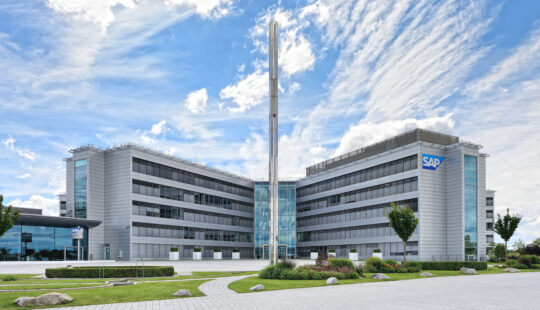Disparity in education is not a new conversation in the U.S., but the pandemic highlighted and exacerbated the issue to a new level. Computer science was one of the hardest hit subjects.
According to a report on the landscape of computer science education, 24% of teachers in high-poverty schools reported suspending computer science instruction due to COVID-19, with only 14% of teachers in low-poverty schools doing the same.
This, of course, is just one example of what happened to our educational system during the pandemic, but it is particularly problematic when we look at the importance of tech literacy in the workforce of tomorrow.
SAP has continued to be a strong advocate for universal and equal access to computer science courses in every classroom by partnering with organizations like the Computer Science Teachers Association (CSTA). CSTA’s work centers around building capacity in K-12 educators to provide relevant computer science curricula with the overarching goal to reduce barriers, support teachers, and advance computer science education across the U.S.
To learn more about the state of computer science education in today’s classrooms and where it is headed in the future, we sat down with CSTA Director of Education Shaina Glass.
Glass’ relationship with computer science has evolved over her 19 years in education. While teaching at a STEAM magnet school, she became curious about the topic, which was simply referred to as “coding” back then. This started an impressive journey of making her way from a CSTA chapter member and leader to CSTA Equity Fellow to her leadership role today.
Q: How would you define the state of computer science education today?
A: In a word, evolving. Back when I became a CSTA member in 2019, it was hard to identify exactly what to teach or how computer science intersected with career education. These conditions have changed drastically. The U.S. is unique: we don’t look at education outcomes nationally, every state evaluates individually. If you want to see how states rank you can look at the State of Computer Science Education Report that is released every year.
Another changing aspect of computer science education is diversity within the teacher pool. When I started 19 years ago, there were few teachers that looked like me. Despite some progress in diversifying computer science teachers, classrooms are still far more diverse than the teacher pool.
Primarily, we are falling short in preparing teachers to feel confident teaching the subject. There are new policies going in place to make sure all students learn computer science, yet we don’t have anyone to teach it. We’re putting the cart before the horse.
Why is computer science such an important topic?
Everything we use in our life is a program. Nearly every job you can fathom today includes some layer of computing. Schools are focused on just needing one computer science teacher when, really, we need all teachers to understand and incorporate it across all content areas and curriculum. This is controversial, but it should touch our social studies and English classes as well as math and science.
One area we struggle with in student standards is the impact of computing. The question is: How do we help the teachers who teach other areas see how computer science impacts their subject?
We must make sure that students know that computer science is not one standalone class and there are no limitations on how they can use it. Students walk around every day with it in their pockets, which makes computer science one of the most vital areas for teaching today.
What are some of the barriers to getting computer science into the classroom?
The biggest component in my mind right now is teacher preparation — and not just preparing current teachers, but also preparing those who want to become teachers. We must be proactive and build skills for the outcomes we want to see later. In the world of computing, we are constantly investing in the potential of new ideas. Why aren’t we doing that with people?
Preparing the teachers who prepare the next generation should be at the forefront of what we are doing for the future of computer science education.
As technology continues to evolve, what does the future of computer science education look like?
There is a place for artificial intelligence (AI), but more so for teachers to understand it from the creator lens versus the user lens. The story of computer science so far has been more about helping students to become the producer versus the consumer. We need to prioritize students’ ability to utilize this technology safely, ethically, and effectively.
Right now, people are full of excitement about the power of AI, but we don’t have enough infrastructure built around how we should appropriately utilize AI in classrooms. Some are rushing to keep up with this demand for using AI, but we don’t have structures in place for protecting or educating students on how AI can impact them, or how it already is. Can we steer away from kids just using AI to them understanding what it is, how it impacts them, and how they want to see AI utilized?
As part of the future of computer science education, we should be creating spaces where students can evaluate the field as much as use it. Let them be the creators and innovators of the next ideas — especially those whose voices have been historically missing in these conversations. Learning to listen and collaborate is critical in the field and can be done in any classroom, making every classroom a computer science classroom. Setting that foundation will change how education moves forward.
CSEdWeek
One initiative helping move the needle of computer science education is Computer Science Education Week (CSEdWeek). This is a collaboration between CSTA and many partners. CSEdWeek aims to raise awareness of the critical role computer science has in the lives of our future generations. SAP continues to develop its impact in the space of Computer Science education with the goal of creating a more accessible and equitable future.
Chelsey Lerdahl is a senior manager for Corporate Social Responsibility in North America at SAP.



